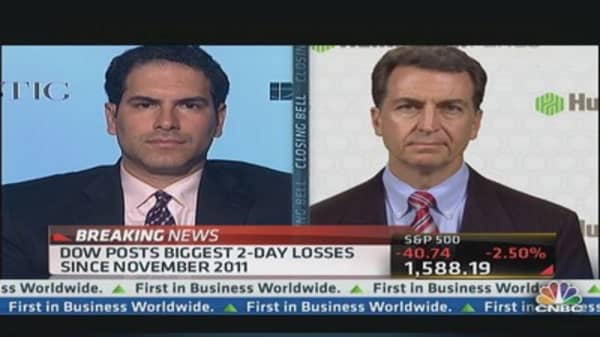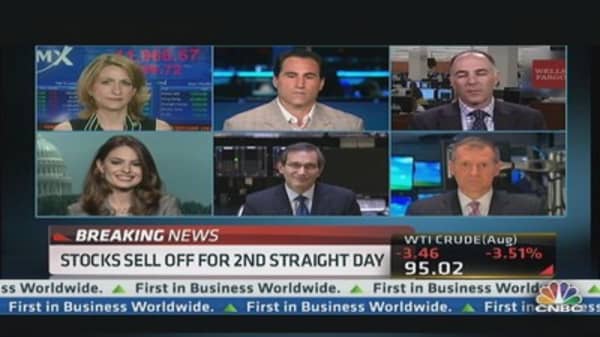On the economic front, existing home sale jumped in May to its highest level in 3-1/2 years, according to the National Association of Realtors. But shares of homebuilders plunged amid worries that mortgage rates might rise after Bernanke said the central bank could reduce the amount of money it pumps into the economy later this year. Pulte, DR Horton and Lennar rounded out the top three worst performers on the S&P 500 index.
Factory activity in the mid-Atlantic region rose to 12.5 in June, according to the Philadelphia Federal Reserve Bank, trumping expectations for a reading of minus 2. Any reading above zero indicates expansion in the region's manufacturing. And a gauge of future economic activity touched its highest level in nearly five years in May, according to the Conference Board.
But traders shrugged off the positive reports.
(Read More: Stock Market Has More Room to Run: Strategist)
Meanwhile, jobless claims jumped 18,000 to a seasonally adjusted 354,000 last week, according to the Labor Department.
At its press event, Facebook introduced video features on its photo-sharing app, Instagram, where users will be able to record 15 second clips and choose from 13 video filters. The new product comes just six months after the release of Vine, Twitter's six-second mobile video capture application.
Also among techs, Microsoft declined after reports that the tech giant had planned to acquire Finland's Nokia, but talks had broken down.
Separately, Microsoft announced a major change to its Xbox One videogame console, saying it will no longer require an Internet connection to play offline games. It also dropped all restrictions on trading games, and did away with region-locking restrictions. Gamestop bucked the negative market trend, soaring nearly 7 percent to lead the S&P 500 gainers.
Among earnings, Kroger posted earnings that topped expectations and lifted its full-year profit forecast.
Oracle is slated to post earnings results after the closing bell.





